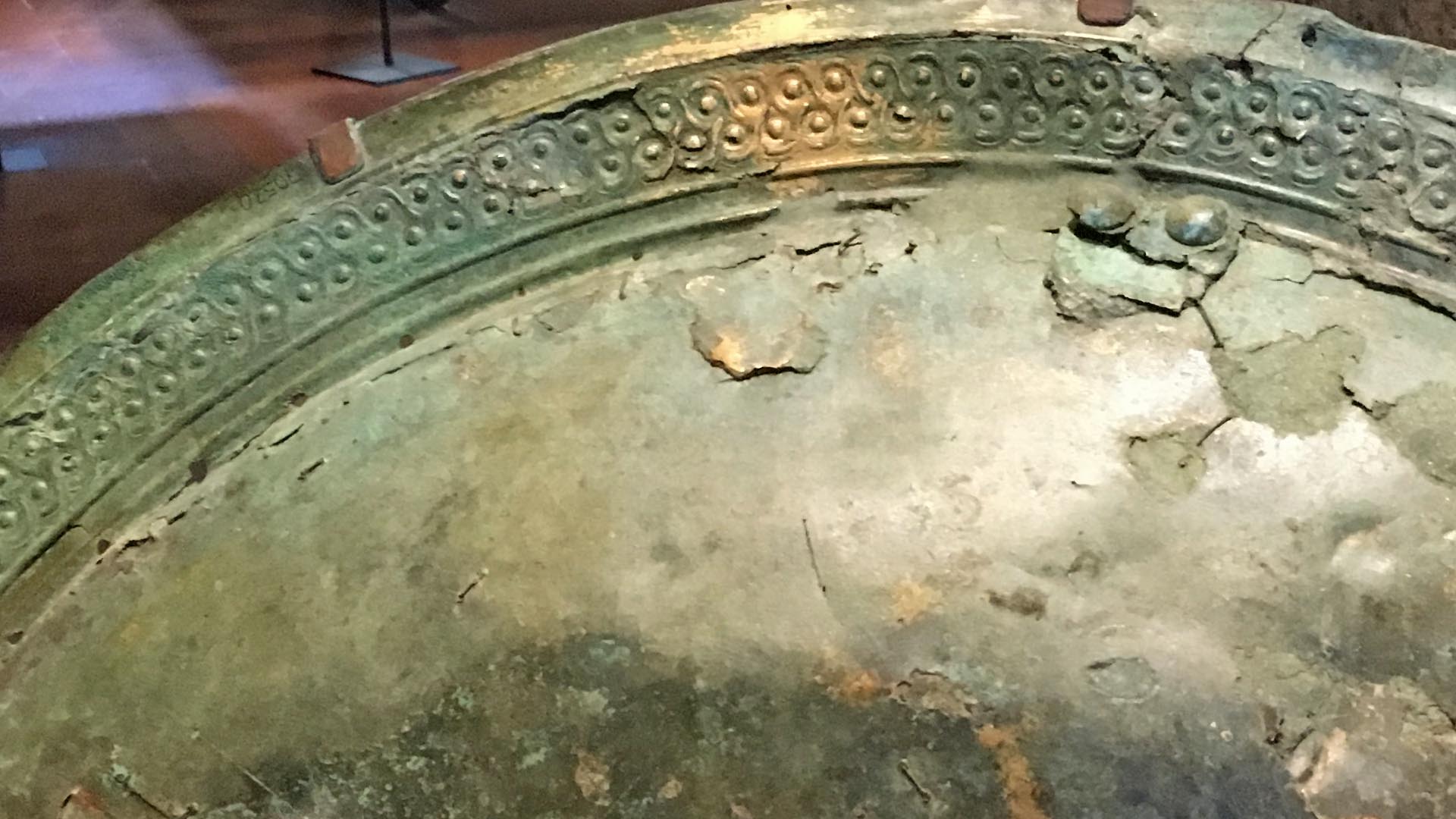Last week, I discussed two painted tombs found near the village of Porano, outside of Orvieto in Italy. These rich graves yielded a wealth of grave goods. Unfortunately, the tombs were investigated in the nineteenth century, before accurate records of excavations were kept. This means that the exact contexts of the discoveries are unknown.
Some of the objects from these tombs are on display at the archaeological museum of Orvieto. Perhaps the most impressive of these finds is a complete bronze panoply, consisting of a pair of greaves, the two halves of a muscled cuirass, a helmet with moveable cheekpieces, and the bronze facing of an Argive shield with embossed decoration.
A bronze panoply
The equipment can be dated stylistically to the fourth century BC, just like the tombs themselves, with the museum suggesting that the panoply was made in the third quarter of that particular century, or between 350 and 325 BC. For this period, it’s fairly standard kit, but the quality is outstanding.
The museum assumes that the pieces all belong together. This seems reasonable given the date and overall style and dimensions of the different elements, even though each of the tombs contained the cremated remains of a number of different people and it’s not entirely inconceivable that, for example, the shield was originally not part of the rest of the panoply.

The shield is of the hollow variety often associated with “hoplites”, but we shouldn’t assume that the person who owned this armour actually fought in a phalanx. In fact, the muscled cuirass is often thought to be typical of cavalrymen, especially in the Classical period: the fact that it leaves ample space for the legs and lower body, so as to facilitate a seated position, is suggestive, but there’s no way to be absolutely sure.
The helmet is of so-called Montefortino type and features moveable cheekpieces. Montefortino is a place in Marche, the region east of Umbria, were helmets of this type were first discovered. These helmets are Celtic in origin, but were quickly adopted by Italic peoples, including the Romans. They were widely used in Central Italy.
Outside influences?
It’s tempting to regard a panoply like this as “Greek” or adopted from the Greeks, but that would assume that, in the fourth century BC, this equipment would still have been considered “foreign”. There’s no reason to believe that to have been the case, especially since Greeks would have been familiar presence in Italy from the eighth century BC onwards.
A parallel might help to elucidate the situation. If, for example, you live in Europe, you might not realize that tomatoes and potatoes aren’t actually native to the continent. They were imported from the Americas in the late sixteenth century (or a little later), but have been a presence here for so long now – about four or five centuries – that they’ve become entirely commonplace. There’s simply nothing distinctly “American” (or: foreign) anymore about a potato or a tomato.
Similarly, there’s no reason to assume that, for an Etruscan of the fourth century BC, this equipment would have been considered “Greek”. Likewise, the Montefortino helmet is unlikely to have been considered a “Celtic” element by its owner. Instead, the assemblage as a whole would have just been part and parcel of their everyday existence, just like the symposia they organized and the wall-paintings with which they decorated their tombs.
In our drive to classify and partition, it’s often difficult to imagine what life must have been like in ancient times, to adopt an “emic” (inside out) rather than “etic” (outside in) point of view. (For more about this, Jonathan M. Hall’s Ethnic Identity in Greek Antiquity (1997) provides an excellent starting point.) Yet, we’ll never be able to understand what people were like back then if we don’t try to look at the world through their eyes.
